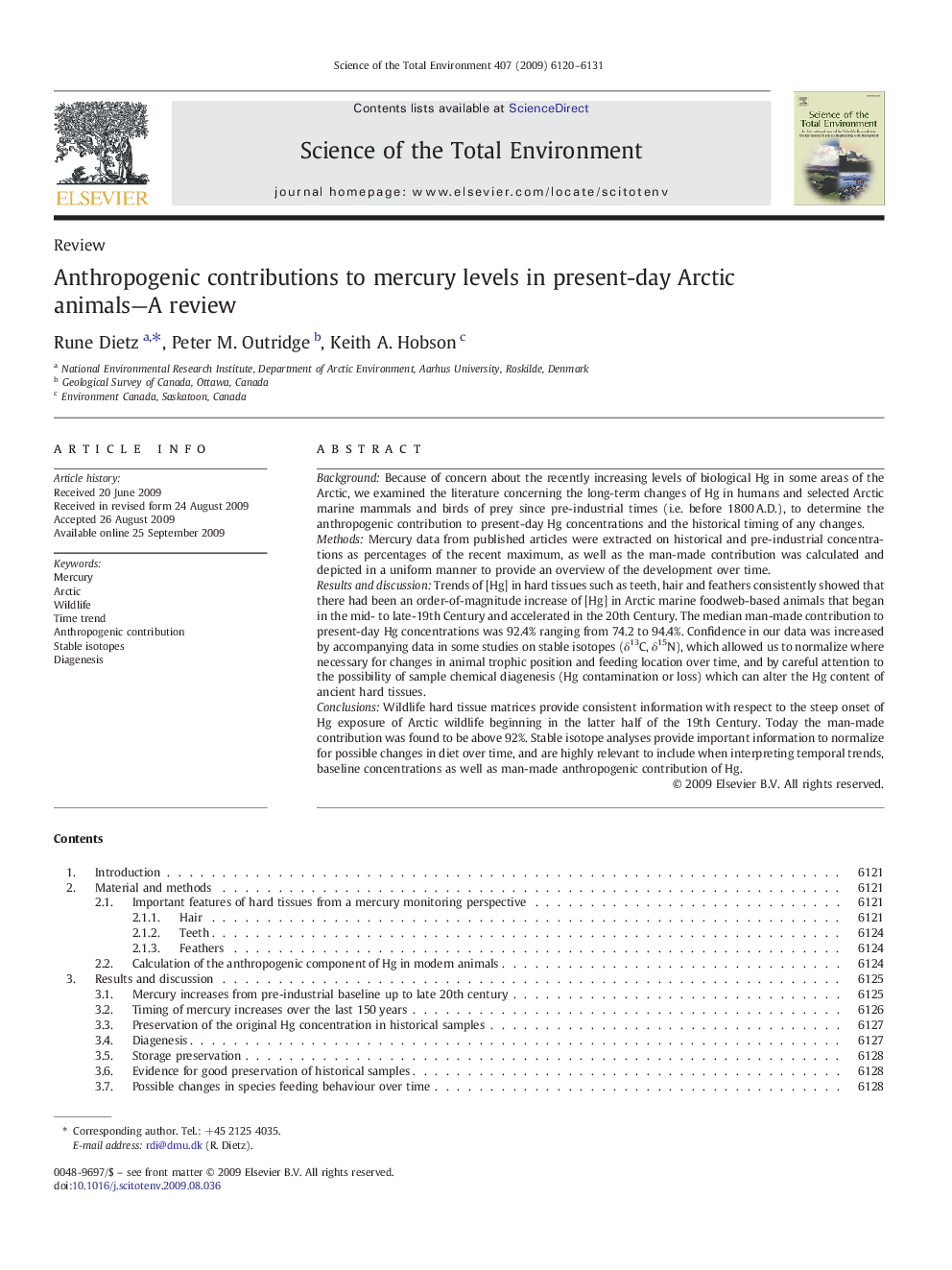| کد مقاله | کد نشریه | سال انتشار | مقاله انگلیسی | نسخه تمام متن |
|---|---|---|---|---|
| 4430822 | 1619886 | 2009 | 12 صفحه PDF | دانلود رایگان |

BackgroundBecause of concern about the recently increasing levels of biological Hg in some areas of the Arctic, we examined the literature concerning the long-term changes of Hg in humans and selected Arctic marine mammals and birds of prey since pre-industrial times (i.e. before 1800 A.D.), to determine the anthropogenic contribution to present-day Hg concentrations and the historical timing of any changes.MethodsMercury data from published articles were extracted on historical and pre-industrial concentrations as percentages of the recent maximum, as well as the man-made contribution was calculated and depicted in a uniform manner to provide an overview of the development over time.Results and discussionTrends of [Hg] in hard tissues such as teeth, hair and feathers consistently showed that there had been an order-of-magnitude increase of [Hg] in Arctic marine foodweb-based animals that began in the mid- to late-19th Century and accelerated in the 20th Century. The median man-made contribution to present-day Hg concentrations was 92.4% ranging from 74.2 to 94.4%. Confidence in our data was increased by accompanying data in some studies on stable isotopes (δ13C, δ15N), which allowed us to normalize where necessary for changes in animal trophic position and feeding location over time, and by careful attention to the possibility of sample chemical diagenesis (Hg contamination or loss) which can alter the Hg content of ancient hard tissues.ConclusionsWildlife hard tissue matrices provide consistent information with respect to the steep onset of Hg exposure of Arctic wildlife beginning in the latter half of the 19th Century. Today the man-made contribution was found to be above 92%. Stable isotope analyses provide important information to normalize for possible changes in diet over time, and are highly relevant to include when interpreting temporal trends, baseline concentrations as well as man-made anthropogenic contribution of Hg.
Journal: Science of The Total Environment - Volume 407, Issue 24, 1 December 2009, Pages 6120–6131